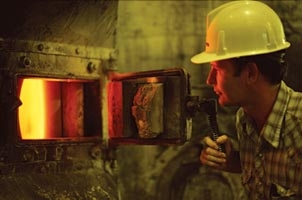Australia’s carbon emissions slow in 2013?
 Australia’s greenhouse gas emissions are expected to slow during 2013, with measured emissions expected to grow by just 0.4 percent from 2012 levels because of reduced output from the metals sector – where Australia’s market is in serious decline – and an increase in renewable power generation.
Australia’s greenhouse gas emissions are expected to slow during 2013, with measured emissions expected to grow by just 0.4 percent from 2012 levels because of reduced output from the metals sector – where Australia’s market is in serious decline – and an increase in renewable power generation.
That is the view of carbon analytics firm RepuTex, based in Melbourne. RepuTex research shows Australia’s emissions forecast to be more than 10 million tonnes, or 3% lower than projected under a ‘business as usual’ scenario without a carbon price.
RepuTex associate director of research, Bret Harper said the Federal Government’s Carbon Price Mechanism (CPM) will play a key role in reducing Australia’s carbon footprint. He said the research shows emissions growth in 2013 to be driven by the power, energy, and mining sectors – with power emissions forecast to grow 1.2%, but muted by increased renewable and gas capacity.
RepuTex forecasts greenhouse gas emissions across the Australian CPM using facility level modelling of more than 750 of the country’s largest carbon-emitting plants and sites.
The power sector will remain the largest source of carbon emissions in 2013 – accounting for 59% of all CPM emissions, followed by mining at 17%.
“One of the key issues facing the power sector is that rising gas prices will hamper gas generation’s ability to compete with coal,” Mr Harper said.
“We see coal maintaining its share of Australia’s generation mix through 2016, when government assistance to brown coal generators expires. From that point the floating carbon price is expected to provide good support to renewable generation, so we anticipate a real decline in power emissions from 2017-18.”
RepuTex forecasts black coal generation to grow by around 20% through 2020, whereas brown coal is forecast to decline nearly 17% over the same period.
Total coal generation is set to increase 8% by 2020, but with a resultant rise in emissions of only 4%, reflecting increased usage of less carbon-intensive black coal.
Emissions from petroleum refining and gas processing – both of which face significant regional competition – will decline in 2013, by 3% and almost 9% respectively as domestic output slows.
Emissions from the metals sector are forecast to drop 6% over 2013, driven by a downturn in Australia’s steel and aluminium industries, with steel emissions forecast to contract over 20% from 2012 levels, in line with reduced production.
“We’re seeing the combined impact of both carbon pricing and major sectoral changes within the Australian economy steadily shifting the country’s emissions profile,” Mr Harper said.
“The effect of forthcoming closures such as Kurri Kurri Aluminium and Caltex’s Kurnell refinery is set to be mitigated by the number of massive new projects within the oil and gas sector.”
The five largest such developments, Browse (Woodside, 2018), Wheatstone (Chevron, 2016), Gorgon (Chevron, 2015), Australia Pacific LNG (ConocoPhillips, 2016) and Icthys (INPEX, 2017), once online, will be the largest emitting facilities in Australia’s energy sector.
Between them, they are forecast to account for around 40% of the entire sector’s emissions by 2020, according to RepuTex.
www.reputex.com
ENDS

 How to resolve AdBlock issue?
How to resolve AdBlock issue?